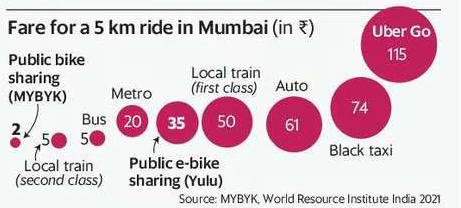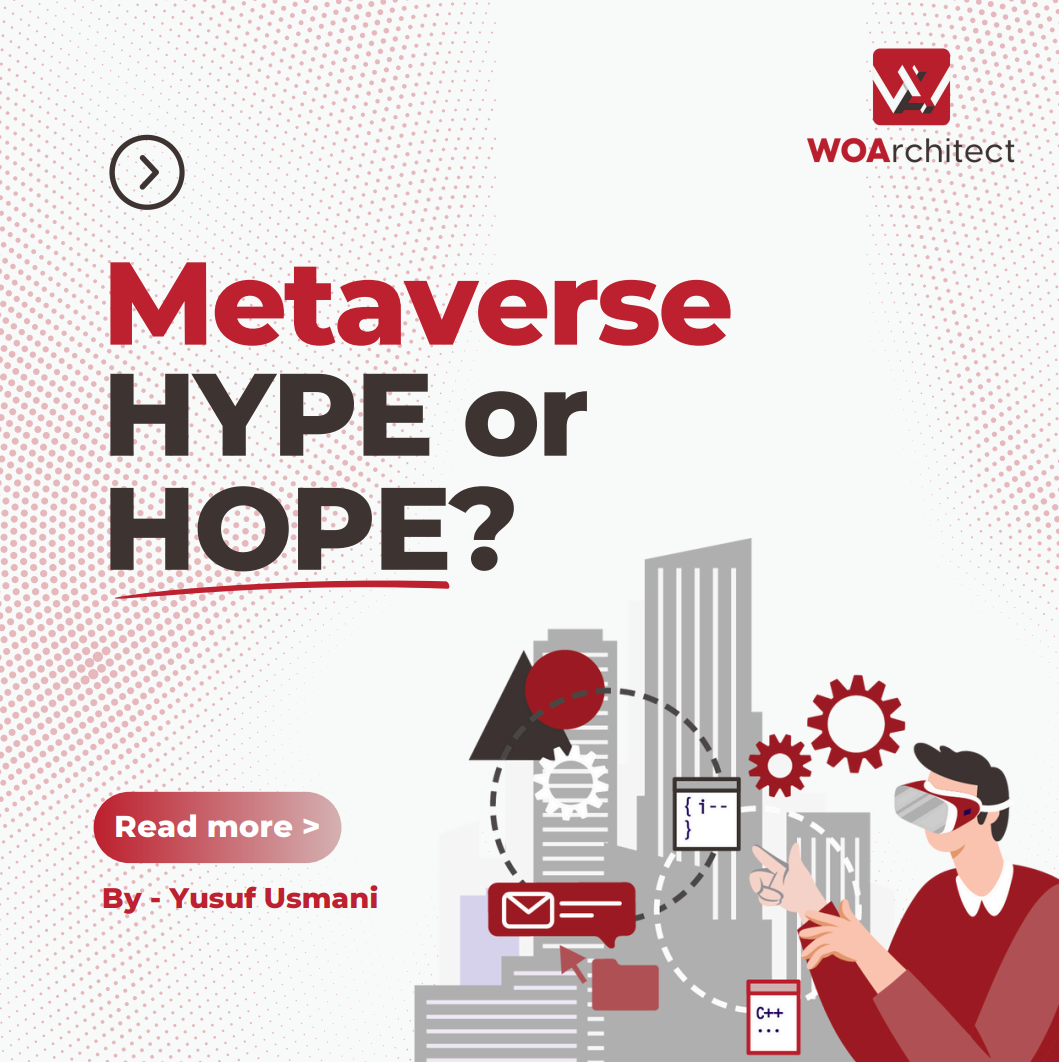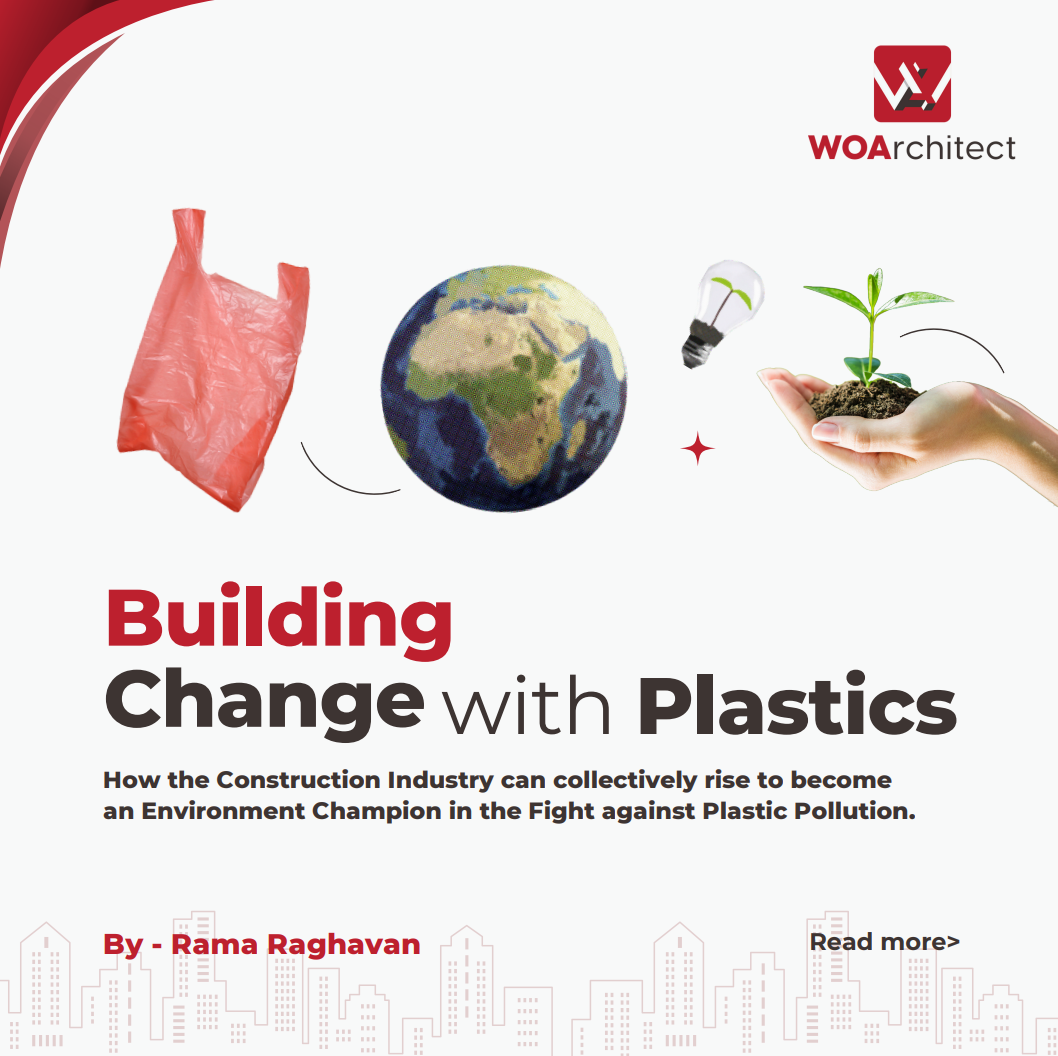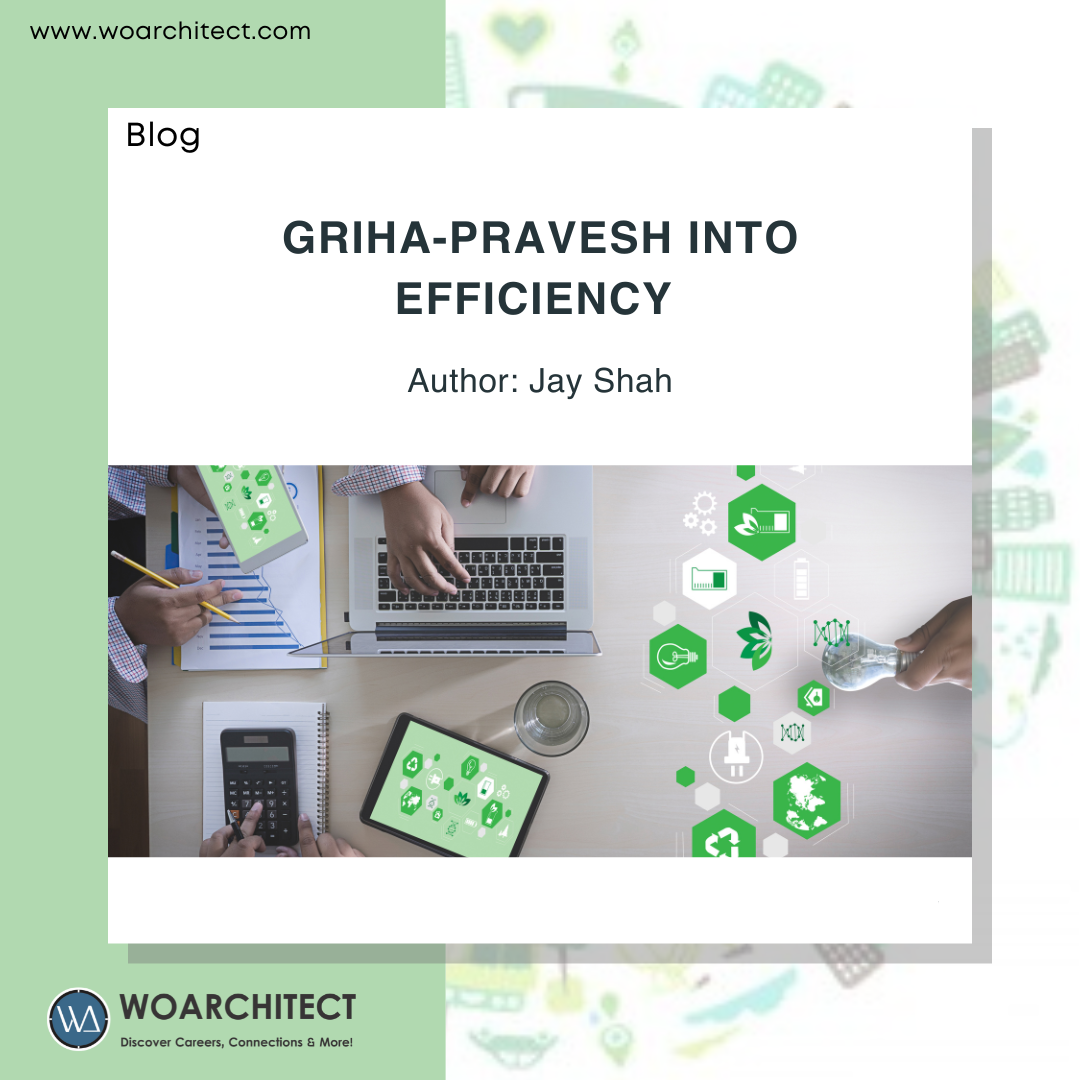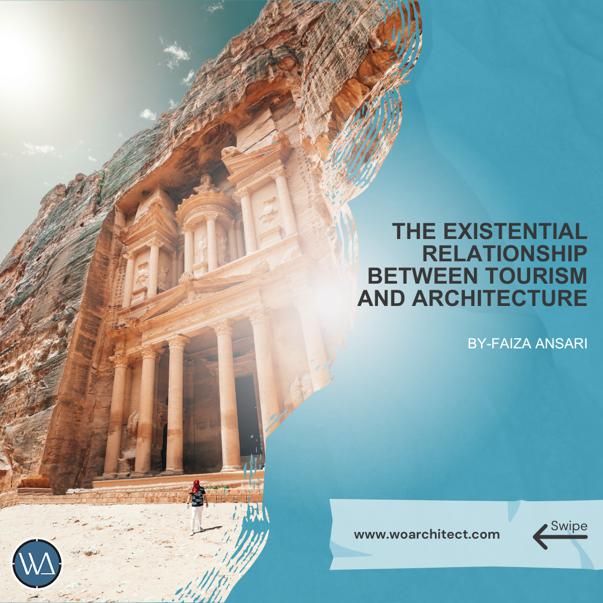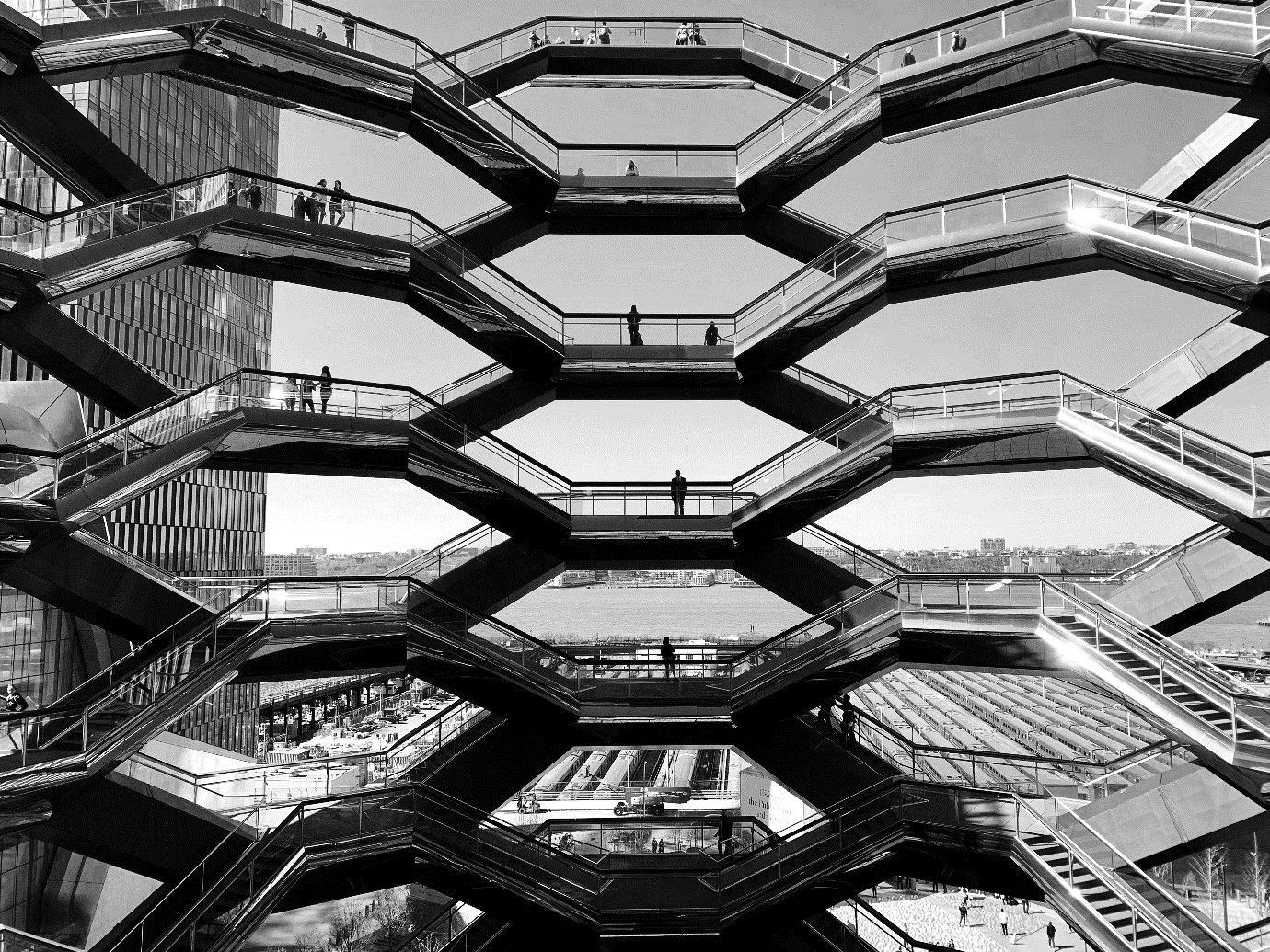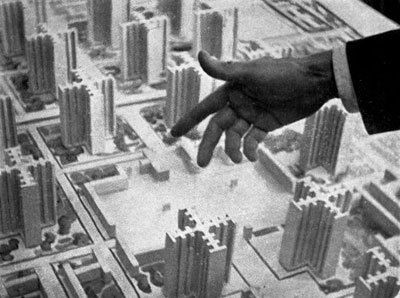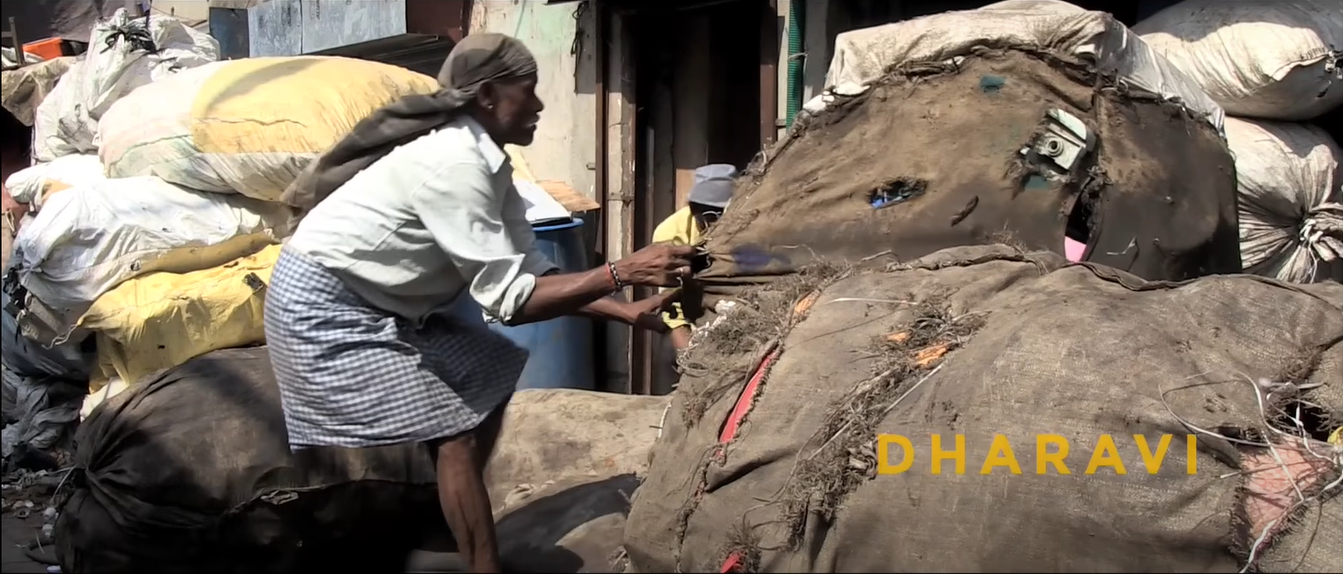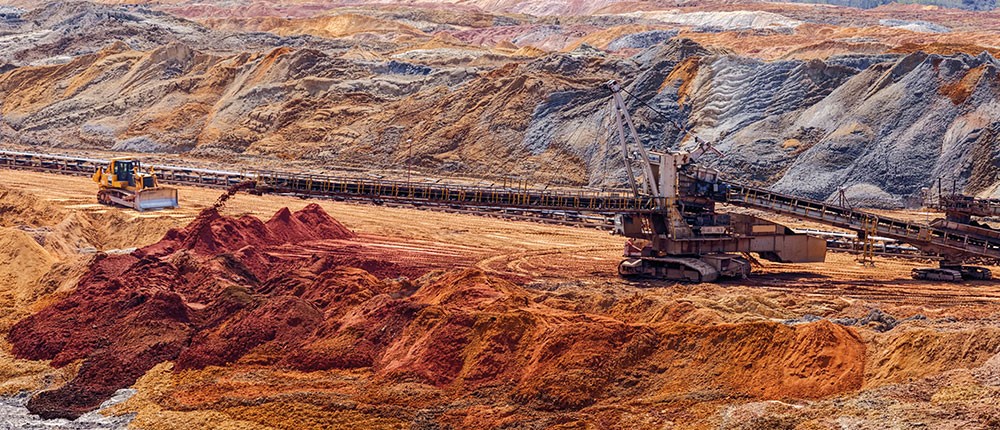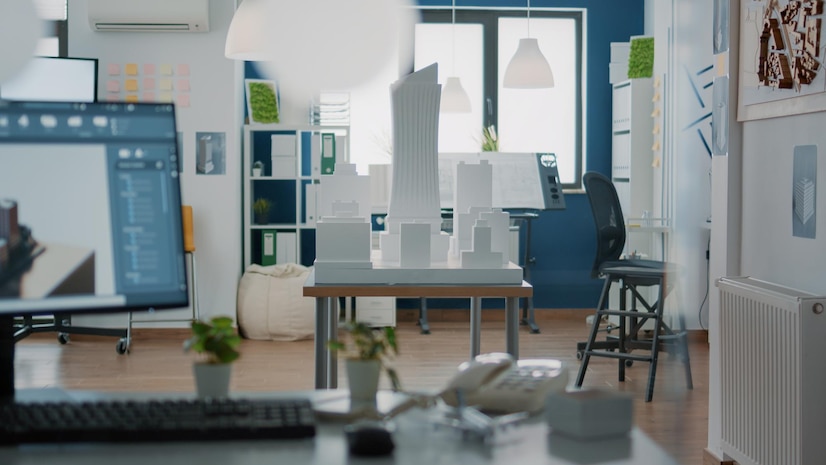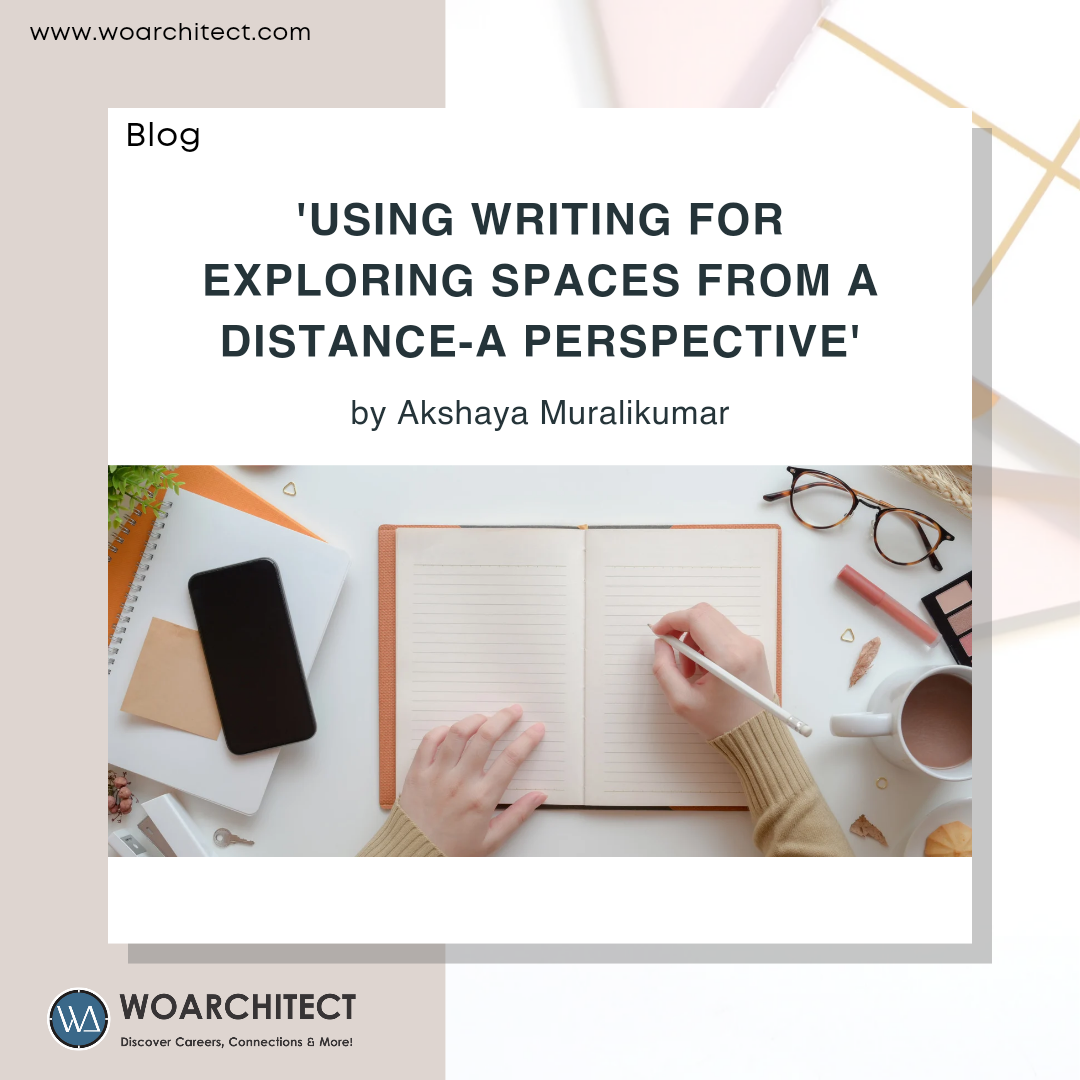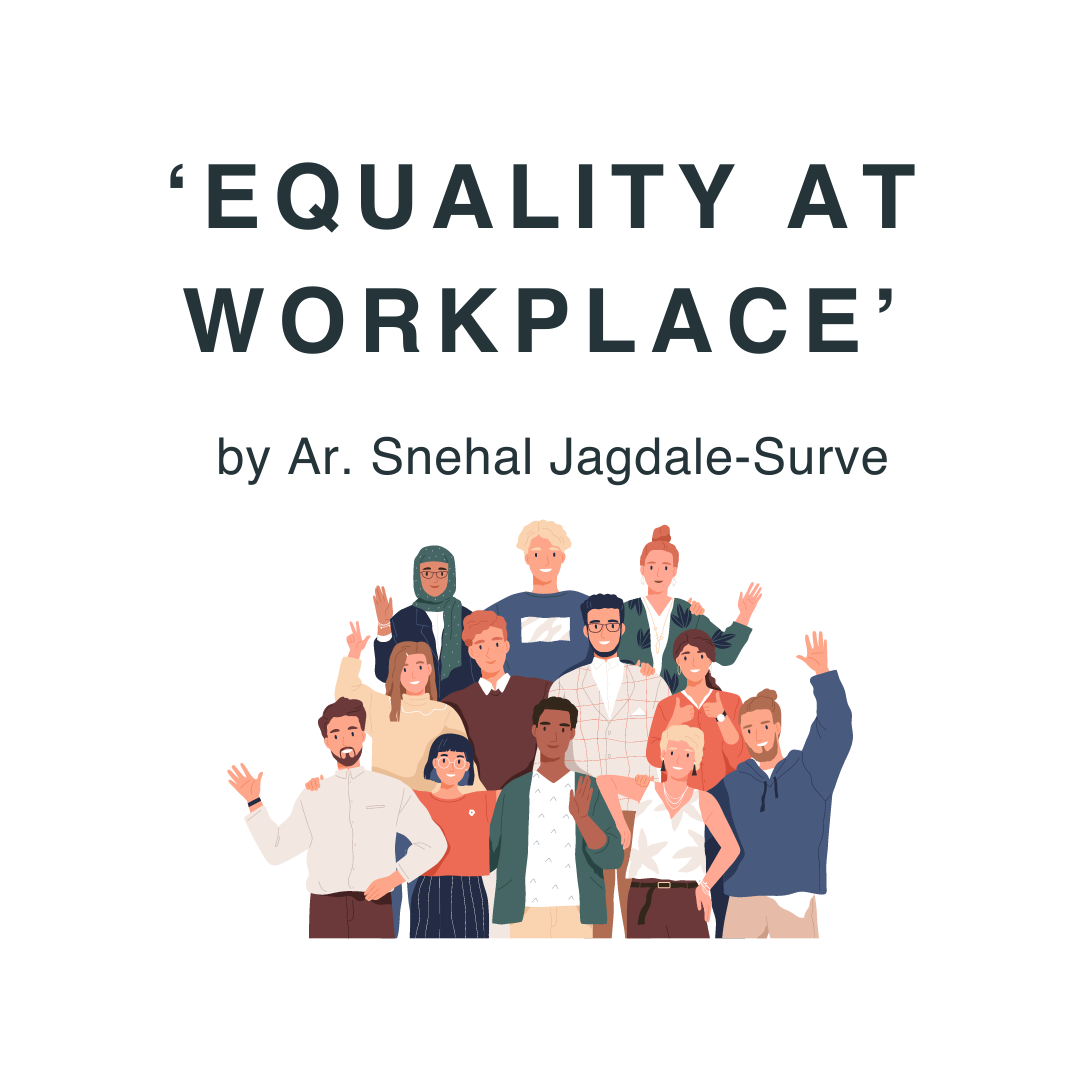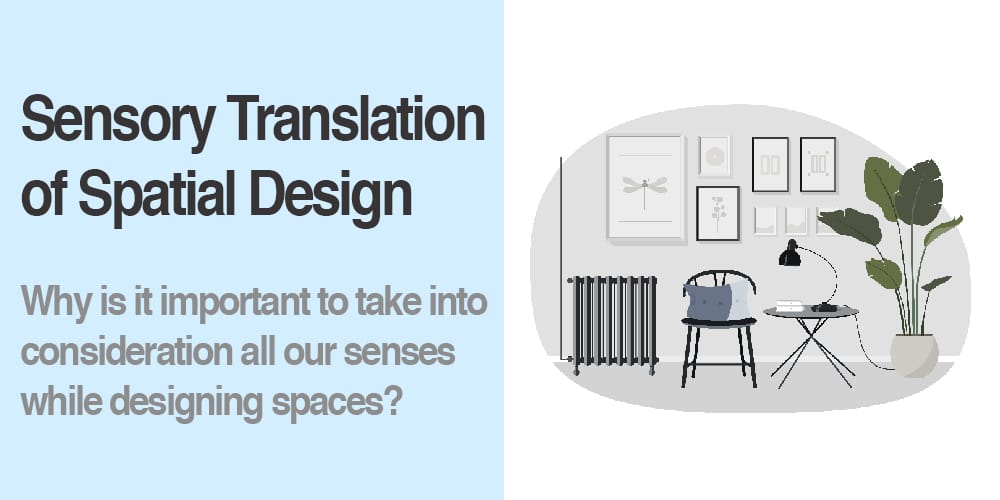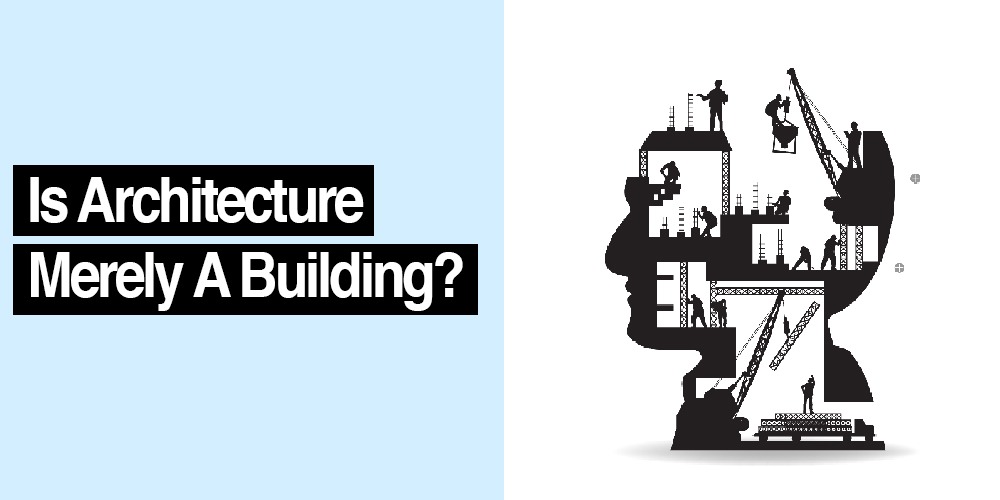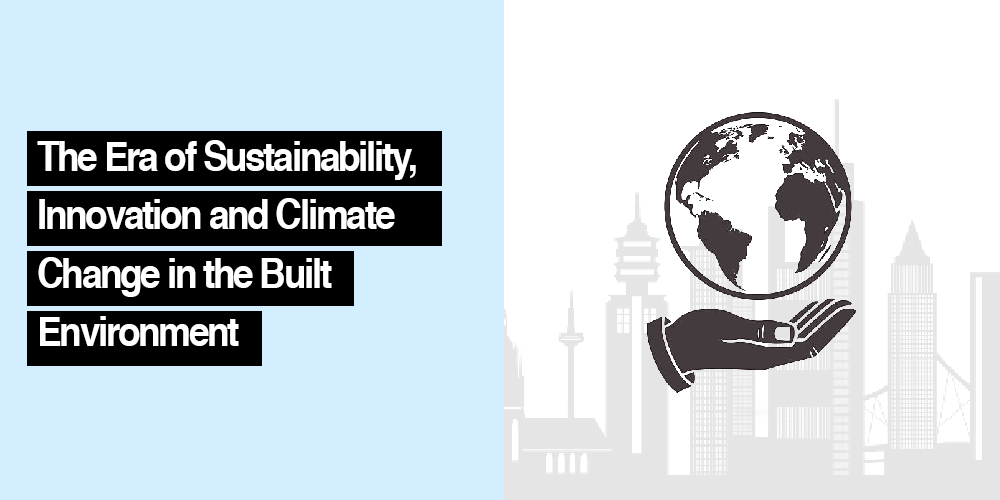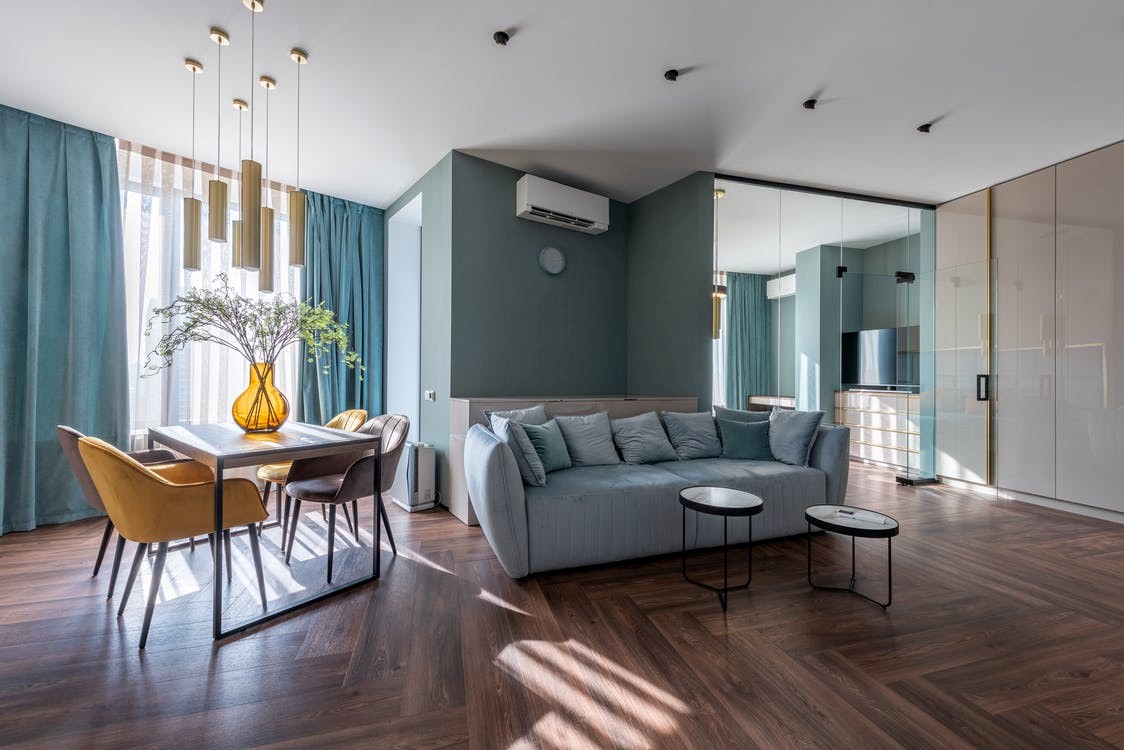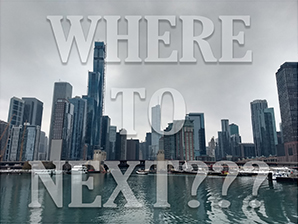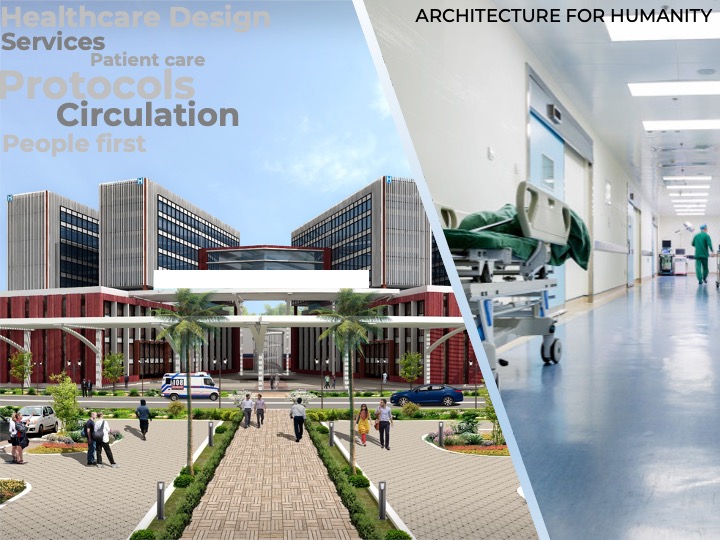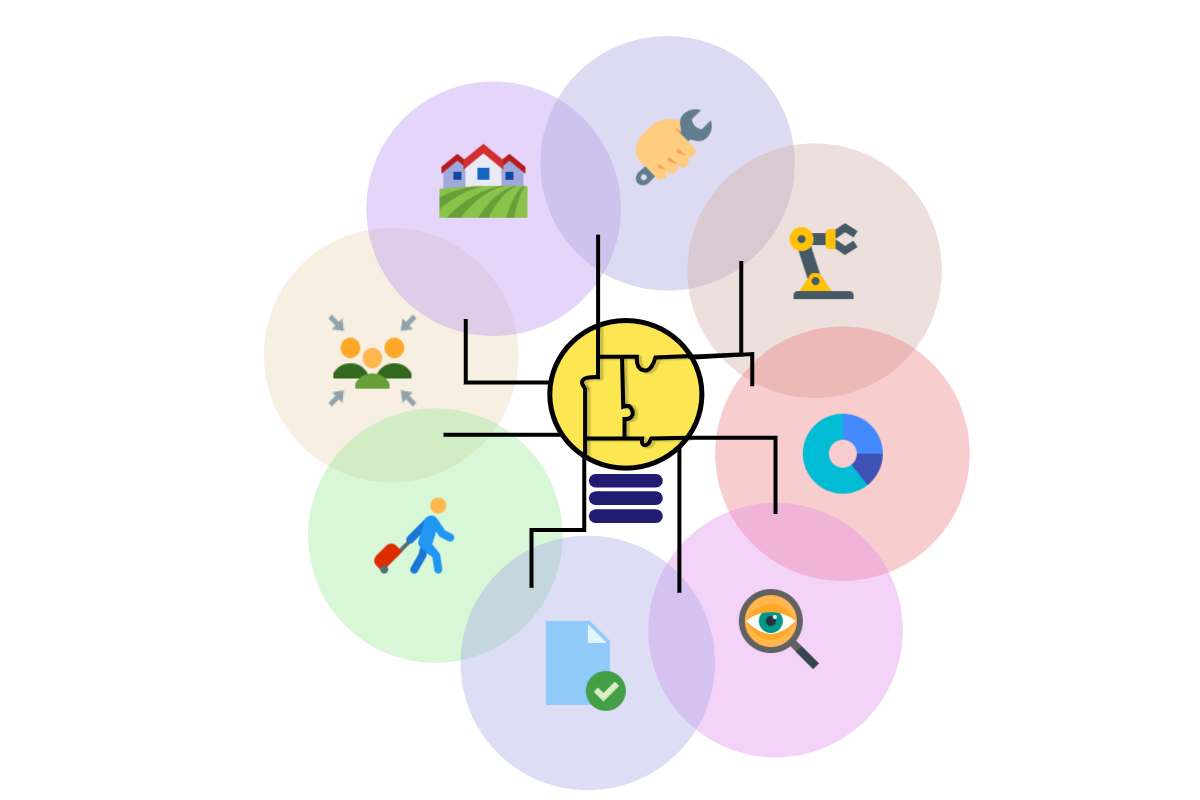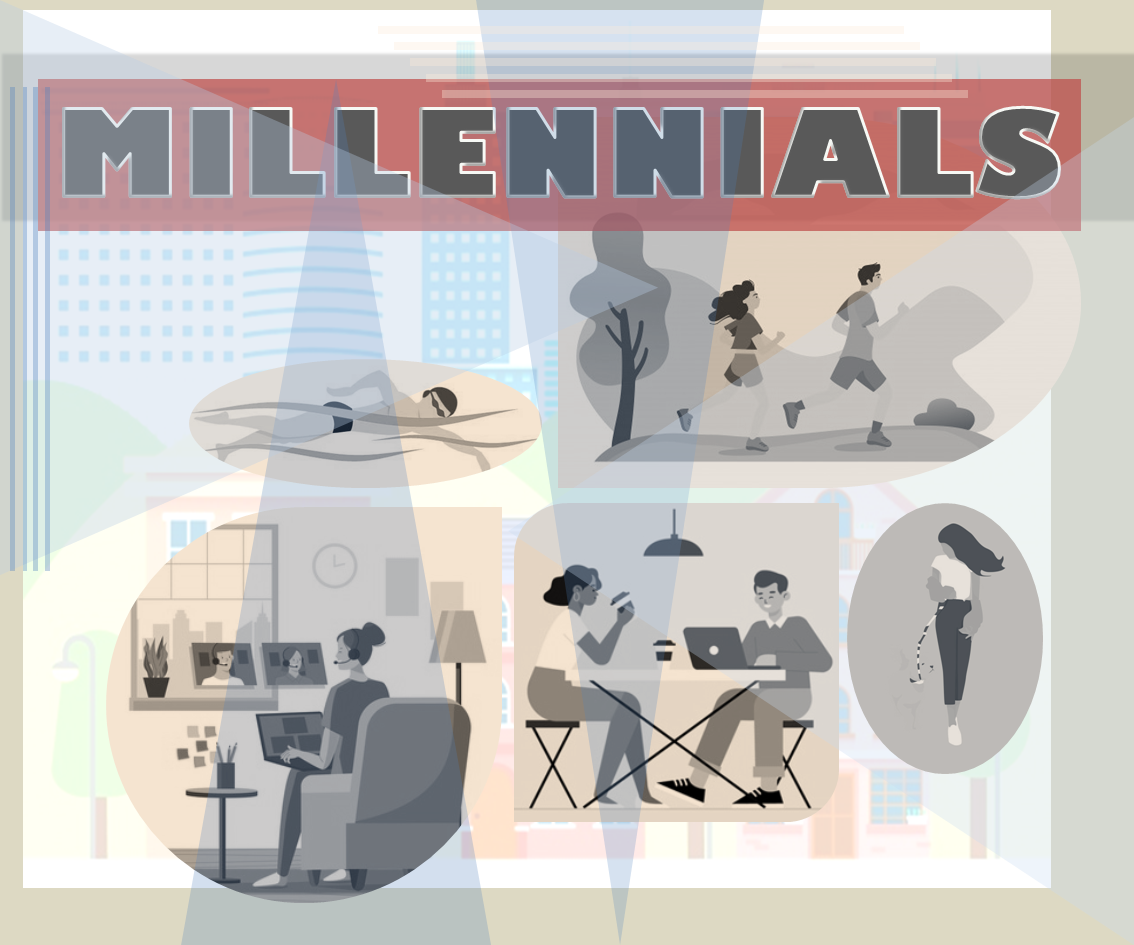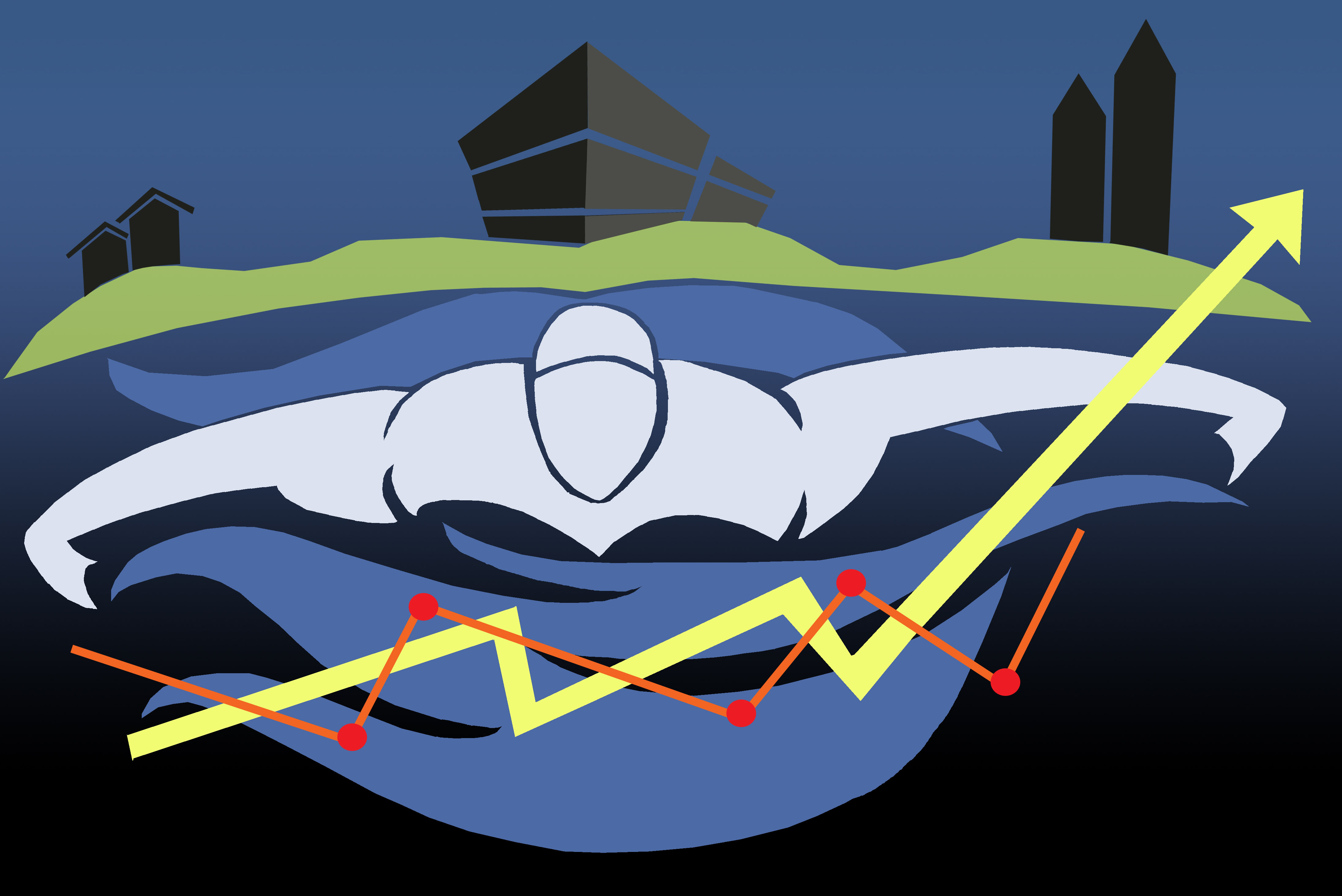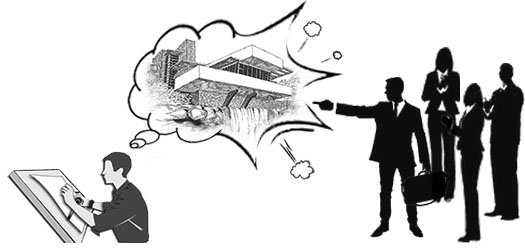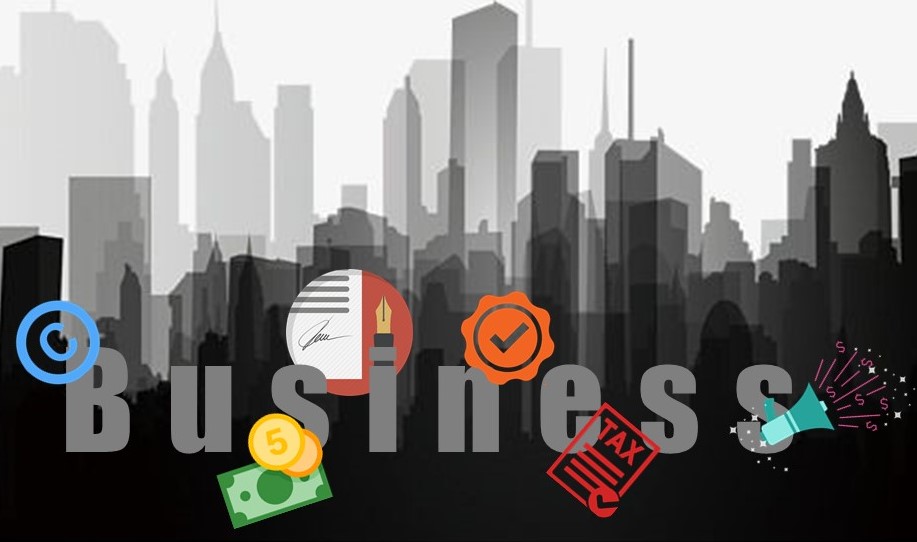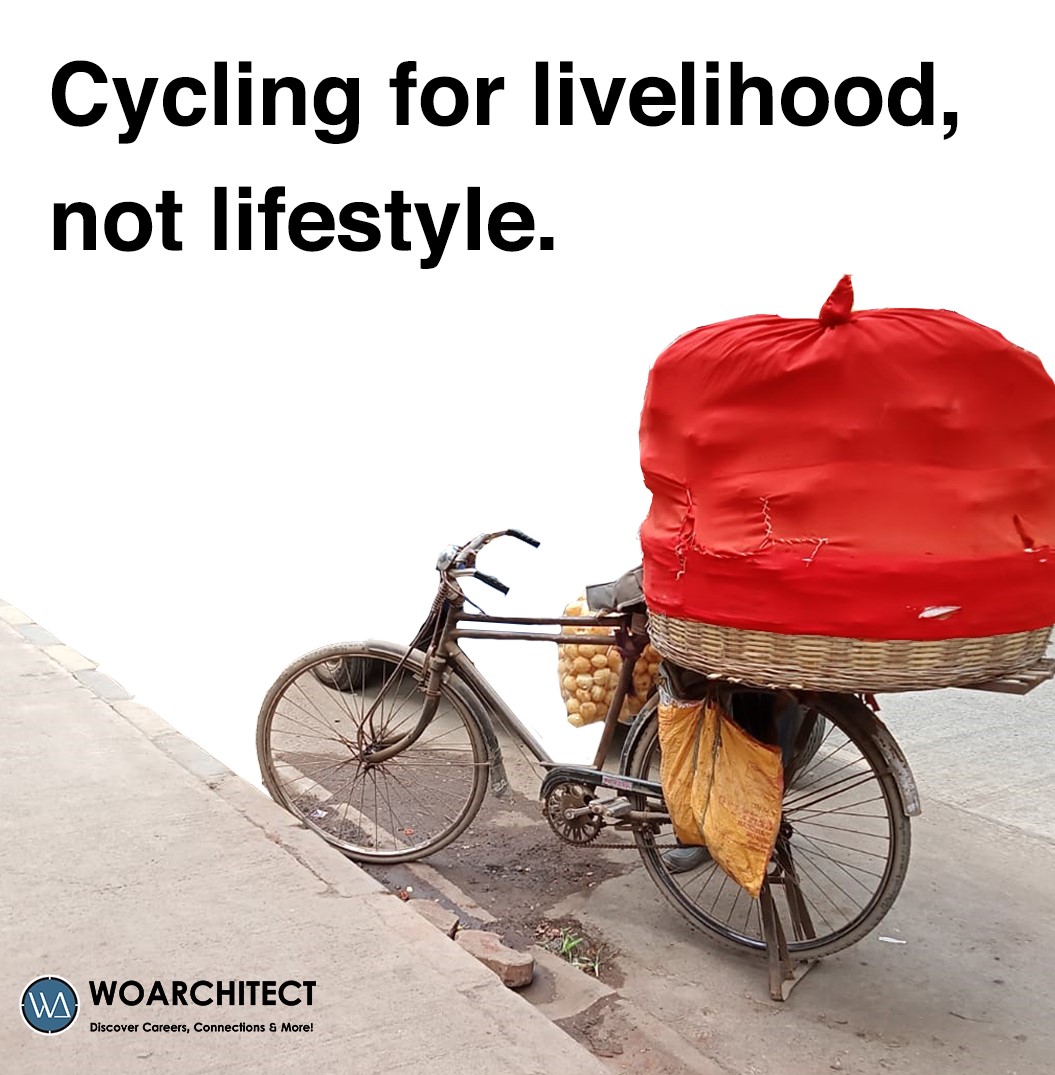

Cycling for livelihood, not lifestyle
Anmesh travels 40 kilometers on a cycle every day in Mumbai City. In the early hours of morning, he pedals to the factory and then delivers products to shops across the suburban zone of Mumbai.
Another cyclist, a laborer, travels 12 kilometers one way to reach his site of work and after a day of honest work, pedals back 12 kilometers to his home.
Rajesh, 50 years old, commutes by hopping on a train in the morning to Dadar’s flower market to bring his supply to the suburbs and then delivers the goods to various housing societies on a cycle. He has been pedaling his cycle for 5km each day for the past 15 years.
Another rider, a vegetable vendor, fulfills his last-mile service to the customer by pedaling a total of 5km per day.
These are the stories of cyclists of Mumbai. Cyclists of Mumbai, largely, do not commute by cycle for recreational or health benefits. They ride it for occupation, for their livelihood. The cycle becomes a natural choice of occupation for the low-income cyclist. It is the cheapest independent mode of transport available.
The cycle is convenient, it is affordable to buy a cycle independently, it requires minimum maintenance and there is no perpetual costing of any fuel of any sort. It is, as one of the low-income cyclists points out, ‘a poor man’s car’. This article intends to look at the low-income group of cyclists, understand their organic contribution to the city’s sustainable transit connectivity, and advocate to include them in the future bicycle infrastructure planning of the Mumbai Metropolitan Region.
Maximum City's Maximum Vehicle!
Mumbai's cycling community is unique. It is used for livelihood and it is not a 'lifestyle' choice. There are three types of such livelihood-driven cyclists:
1. Employment-driven cyclist: Riders use cycles to commute from home to workplace. They travel up to 12-15 kilometers one way. When inquired about choosing cycle as a transport, a rider said the following,
‘It is independent, I do not have to wait and keep track of train’s timings. I can ride according to my schedule. Importantly, the cycle is cheap. It is a one-time investment. I bought the cycle for 5000 rupees (INR). The maintenance is around 400 rupees (INR) per month-if in all. This one cycle will last for 10-12 years. Buying train and bus tickets every day is expensive and traveling in them is a hassle. On cycle, I can breathe khuli hawa (open-air) and avoid the congested public transport.
2. Deliver-driven cyclist: The cycle is a cheap way to use it for local area delivery. A two-wheeler bike can cost up to 75000 INR, add to that there is the cost of fuel and maintenance. However, a cycle cost around 5000 INR, and if purchased second-hand, it comes to a mere 2500 INR, and there is no cost of fuel. Employers owning all sorts of businesses own cycles for the use of their employees. An employee, on average, rides up to 3 kilometers per day to fulfill his delivery requirement in the local area.
3.Business-driven cyclist: Many small businesses such as newspaper distribution, laundry, and supply of goods have delivery requirements. These small business owners often resort to using cycles as a major mode of transport for their business requirements.
As per Anmesh (a small business owner), ‘I travel 40km around the area from Orlem to Charkop to Malad station. Delivery is a huge part of my business. I take products from the factory and deliver them to shops across Kandivali and Malad west. It is affordable and the only operation cost is my labor.' The cycle has no fuel cost and negligible capital investment. The cycle is a smart choice for these small-owned businesses.
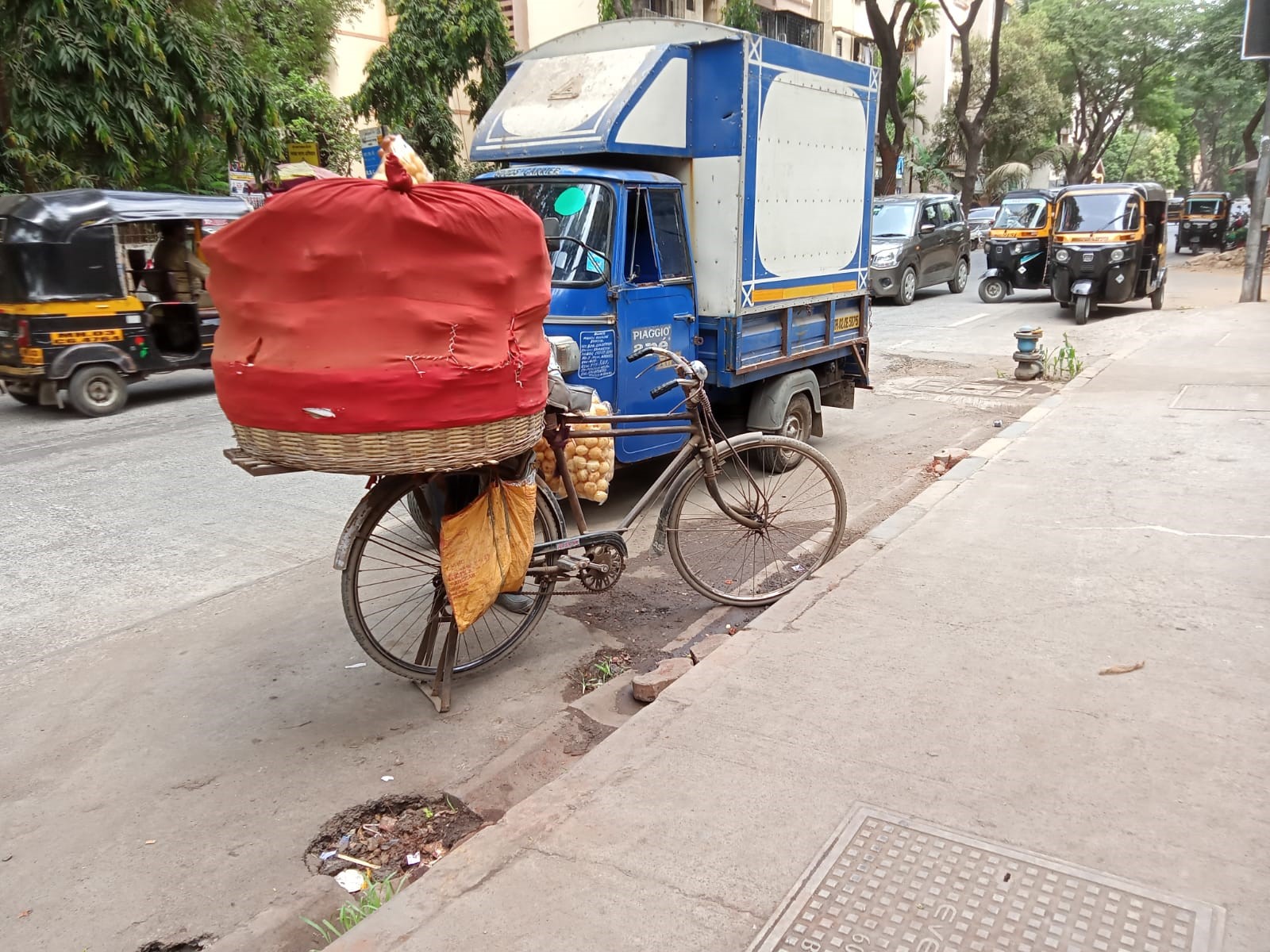 Anmesh’s cycle is used to deliver products shop to shop, credits: Saba Serkhel
Anmesh’s cycle is used to deliver products shop to shop, credits: Saba Serkhel
However, the low capital investment, negligible operational cost, and low maintenance aren’t the only factors making cycling such a popular choice among low-income cyclists, it is also supported by the urban fabric of Mumbai. Density, road connectivity, climate, and terrain are other elements of Mumbai’s urban fabric that allow these cyclists to commute effectively.
Density:
Mumbai is a dense city, in 2018, according to a report by UN Urban data, it was listed as the second densest city in the world after Dhaka in Bangladesh (F.P.J, 2019). Its density is supported and serviced by a heavily mixed land use.
Almost all blocks of Mumbai have mixed land uses. A junction of any Mumbai street would have an array of small businesses, small-scale factories, residential, and educational amenities. In 2018, the national Ease of Living exercise by the Union home and urban affairs ministry of India ranked Mumbai as number 1 for mixed land use/compactness in the country (Pinto, 2018).
The density and mixed land-use pattern allow low-income cyclists to commute effectively. The delivery-driven and business-driven cyclists find it easier to service blocks of Mumbai as they can engage with a high number of people and a variety of different land uses via smaller distances.
A delivery-driven cyclist loops a radius of 1-2 kilometers to fulfill the requirements whereas a business-driven cyclist might have to loop and service from anywhere between 5-10 kilometers. Add to that, some employment-driven cyclists often have various places of work. They are usually day laborers and report to multiple workplaces in a day.
‘I have three workplaces, morning to lunch I work on the construction site, then for 2 hours I work at the mechanic shop and later in the evening I take a short shift in a factory. All of my three workplaces are within 2-3 kilometer radius. With my cycle I can independently commute between my workplaces conveniently.’, said a cyclist from an area nearby Malad railway station in Mumbai
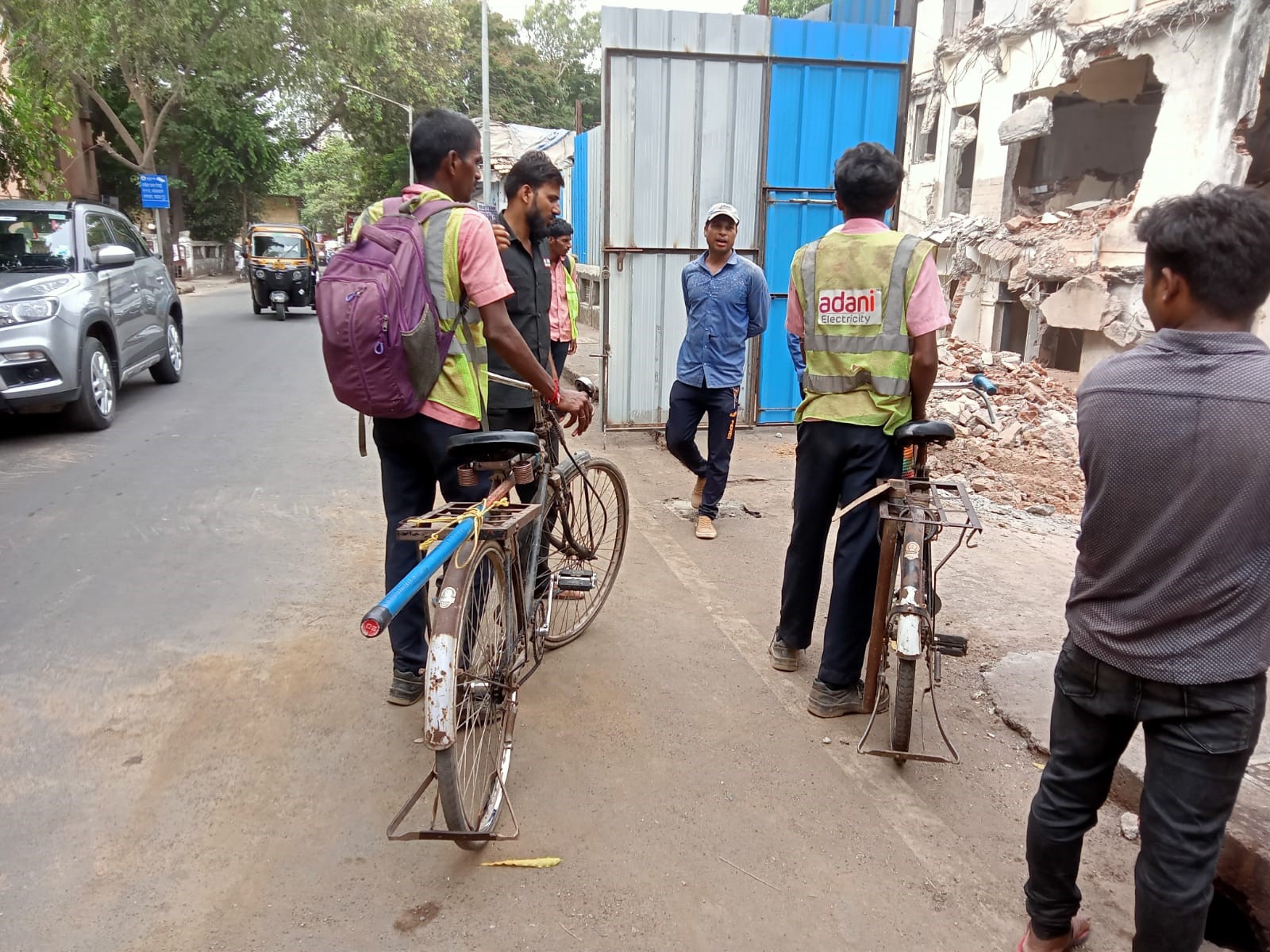 Cyclists arrive at their workplace, credits: Saba Serkhel
Cyclists arrive at their workplace, credits: Saba Serkhel
Road Connectivity:
Mumbai transport planning functions largely on north-south connectivity. The linearity is a result of the organic planning of the city. Historically most of the ‘business’ land uses were focused on the southern tip with no other way to expand and increased migration, the largely residential land use thereafter expanded towards the north, known today as the suburban Mumbai.
The movement of people is largely linear, driven by the expressways, and local railways. The east-west connectivity is then served by collector roads (link roads of the Mumbai city), minor arterials, and the local roads. Mumbai is well connected via roads, it connects the macroblocks via expressways and the smallest blocks via collector roads and local roads. It was ranked 4th in the country for Transportation and Mobility by the Ease of Living exercise conducted by the Union home and Urban affairs ministry of India, in 2018 (Pinto, 2018).
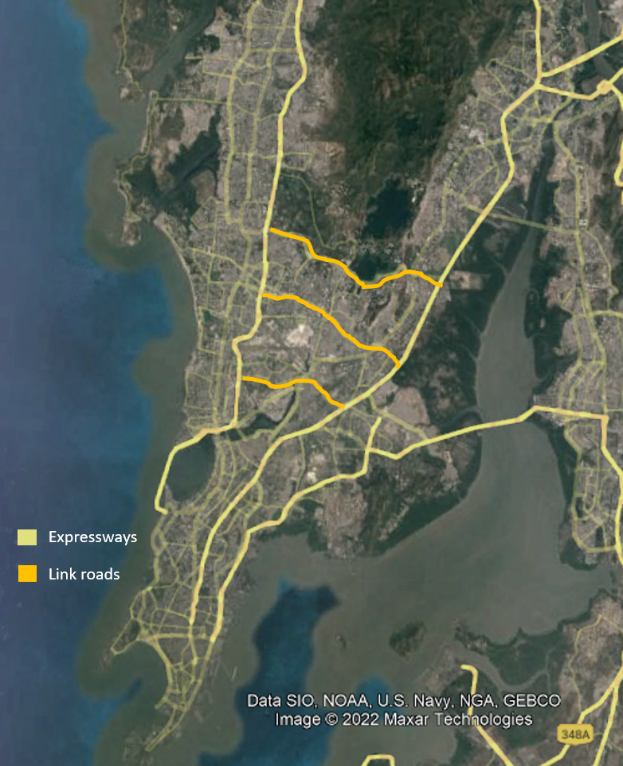
Road connectivity of Mumbai, map source: GOOGLE EARTH PRO
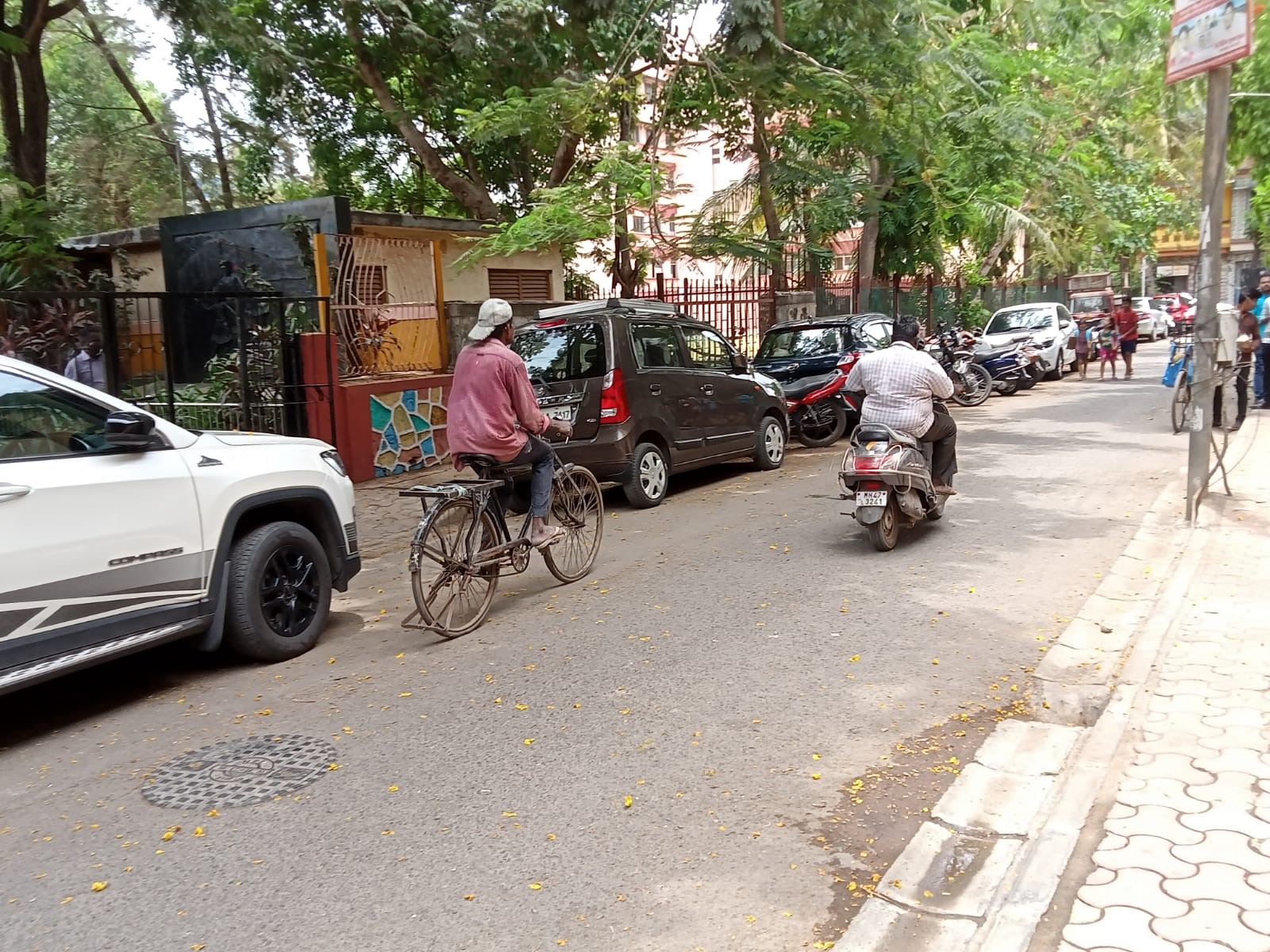
A cyclist commuting for work, credits: Saba Serkhel
Climate:
Mumbai city is located in the tropical zone. The climate is usually characterized as warm and humid. It experiences monsoon from the month of June to October, the other 7 months of Mumbai are dry and ideal for cycling. The hottest months in Mumbai are from March to May, with temperatures reaching up to 40 degrees Celsius.
During those months, the cyclists often cool themselves with short breaks of sugarcane juice and lemonade from the streetside shops. The city’s biggest advantage is that it never snows and in the four months of the monsoon season, cyclists use makeshift coverings (see picture) as protection from rain to ride the bicycle effectively year-round.
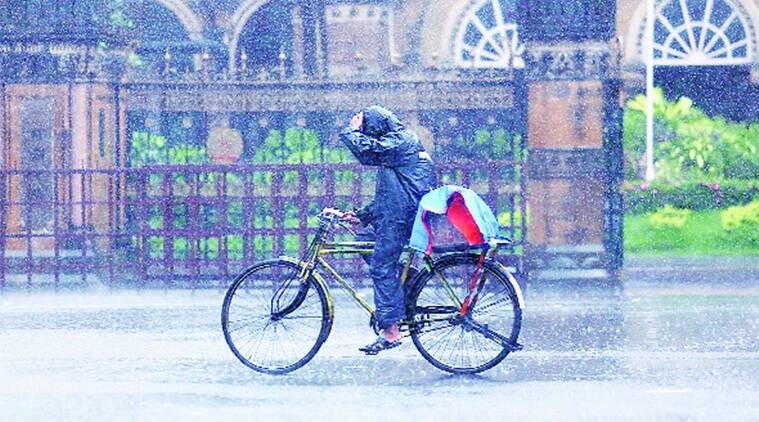
Cycle riding in monsoon, credits: Nirmal Harindran, Indian express
Terrain:
Mumbai’s geography is largely characterized by low-lying plains. It is an ideal city to cycle for short and long distances, making it relatively less physically taxing to cycle than in other cities like Dehradun in India or Athens in the USA.
Density, road connectivity, climate, terrain, low capital investment, negligible operation cost, and low maintenance contribute to the amazing ecosystem of low-income cyclists.
This ecosystem of low-income cyclists has grown organically, essentially out of necessity, and supported by the organically existing urban fabric of Mumbai. The ecosystem wasn’t a result of any conscious planning effort and that begs the question what are the cycle infrastructure planning efforts in Mumbai? And more importantly how do these efforts integrate and include the low-income cyclists?
The city is growing and evolving at a fast pace. Many planning efforts are taken up by the Mumbai Metropolitan Regional Development Authority (MMRDA) and BMC (Brihan Mumbai Corporation). The most popular one began in 2011, the Bandra Kurla Complex cycle track. Bandra Kurla Complex is a business district of Mumbai.
Its land use is predominantly used for offices and infrastructure of Multi-National Companies and the diamond market. In 2021, MMRDA stated to complete the refurbishment work of the footpath and cycle track in the G-Block of Bandra Kurla Complex (BKC) (Adimulum 2021). A special focus of this project is improving the user experience and mobility within the G-Block of the BKC. Rationalizing space allocation among motorists, pedestrians, and bicyclists was implemented for the same.
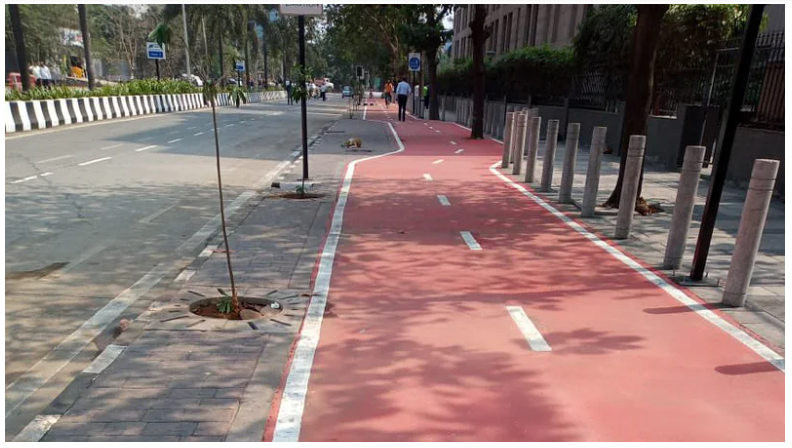
Cycle track at BKC, credits: FreePressJournal
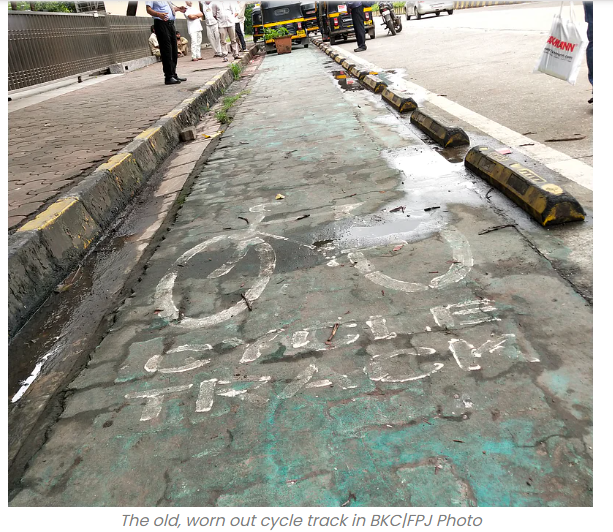
Old- worn-out cycle track at BKC, credits: FreePressJournal
Another bicycle infrastructure project is coming up near the Tansa pipeline under BMC. It is a 39 km-long cycling stretch. The Tansa water pipeline is split into two sections, one from Mulund to Dharavi and the other from Ghatkopar to Sion.
Mulund, Bhandup, Sahar, Wakola, Hussein Hill, Khar East, Mahim, Dharavi, Ghatkopar, Kurla East, and Anda Depot are among the ten BMC administrative wards where the pipeline runs. The cycle and jogging tracks have been proposed on both sides of the pipeline.
The track will be elevated in Mahim and will be developed in three phases. Parts will be themed according to Bollywood, books, or biodiversity. Known as 'Green Wheels along Blue Lines', it is expected to cost around 300 crores INR. The corporation has set aside 100 crores INR for the track in the budget. Some stretches in Mulund and Powai have already been opened (The Hindu, 2018)
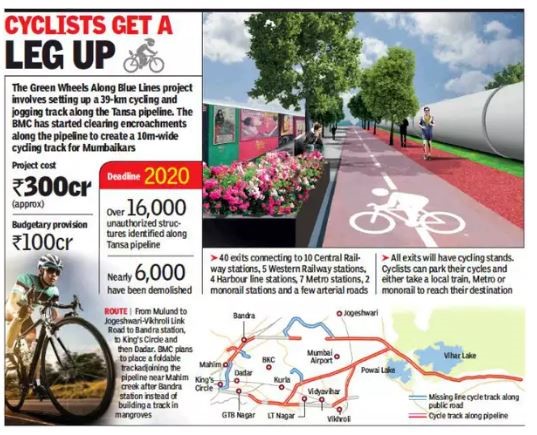
Overview of the Tansa pipeline cycle project, credits: Times of India, 2018
A more recent project initiated by MMRDA is the integration of cycling with the Mumbai Maha Metro project. Metro Line 7 from Aarey to Dahisar and Metro Line 2A from Dahisar to Dhanukar Wadi now have two metro stations where the ‘rent-a-bike’ program has recently started. There are two publicly available facilities, one at Versova Metro Station, Andheri, and the other one is located at Joggers Park, Andheri. The program is expanding to include more stations; Dindoshi in Malad.
Mumbaikars can access this facility through the MYBYK app, the charge is 2 INR per hour, making it the cheapest public transportation in the city (see image).
Source: Mint Newspaper, Vol 5 No 137, Date 9th June 2022
The purpose of the initiative is to ensure that riders of the metro do not have to depend on the shared auto-rickshaw for the last-mile connectivity.
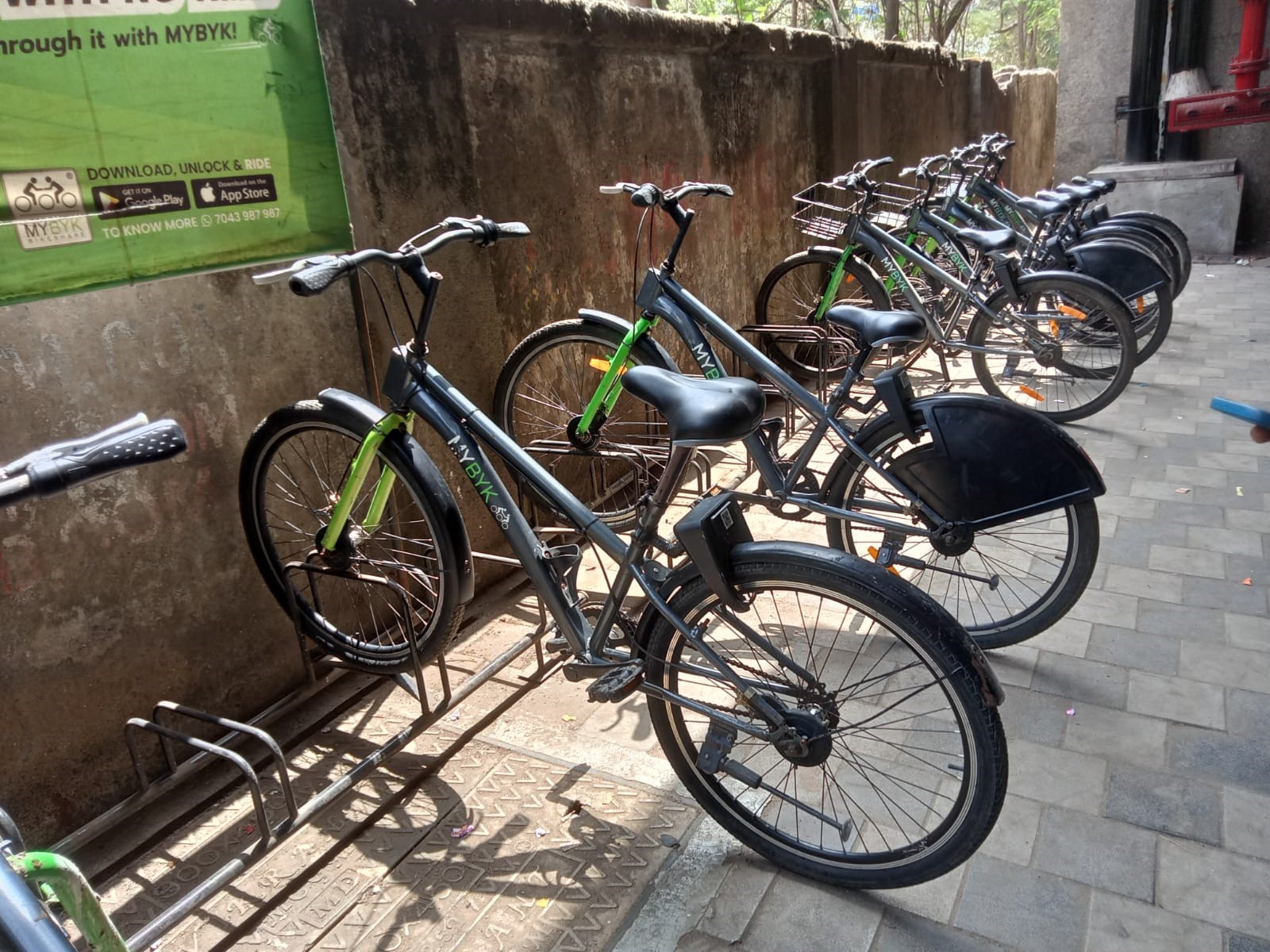 MYBYK facility near Versova Metro Station credits: Saba Serkhel
MYBYK facility near Versova Metro Station credits: Saba Serkhel
These efforts are worth noting and recognizing. However, do these efforts actively integrate and include the low-income cyclists? The three profiles of low-income cyclists mentioned above; ‘employment driven’, ‘delivery driven’, and ‘business driven’ might not fully benefit from the aforementioned efforts.
It is acknowledged that bicycle infrastructure should be for all and the article does not take away from the efforts of BMC and MMRDA. The article solely aims to explore if the efforts integrate the needs of the already existing low-income cyclists.
Efforts focusing on high-income cyclists: BKC cycle track project is located in an area that serves the office-going crowd which are predominately middle-income groups and high-income groups—the white-collar crowd. Add to that, there is no ecosystem of low-income cyclists present there. The project does not serve them and is exclusive to other groups present in the Bandra Kurla Complex.
One type of cycle does not work for all: The cycles installed at the metro stations are primarily for simple riding, for commuting purposes only. Delivery-driven and business-driven cyclists do not feel included.
‘This is a good idea (referring to the ‘rent-a-bike’ program at the metro stations), but having my cycle allows me to be independent. I would suggest the government should subside the purchase of e-bikes. During delivery, we have a large number of products to take from point A to point B. To carry the load and pedal the bicycle is physically stressful. The e-bike will ease it.’, said a cyclist from Goregoan, Mumbai.
Another cyclist said, ‘Whatever program the government may come up with, the bicycle must have this peti (pointing to a relatively large luggage carrier which is a common feature in cycles of delivery driven and business-driven low-income cyclists) Without this peti, there is no point in the cycle, I need to take products from one point to another, and I don’t see how I can use the cycle by the government.’
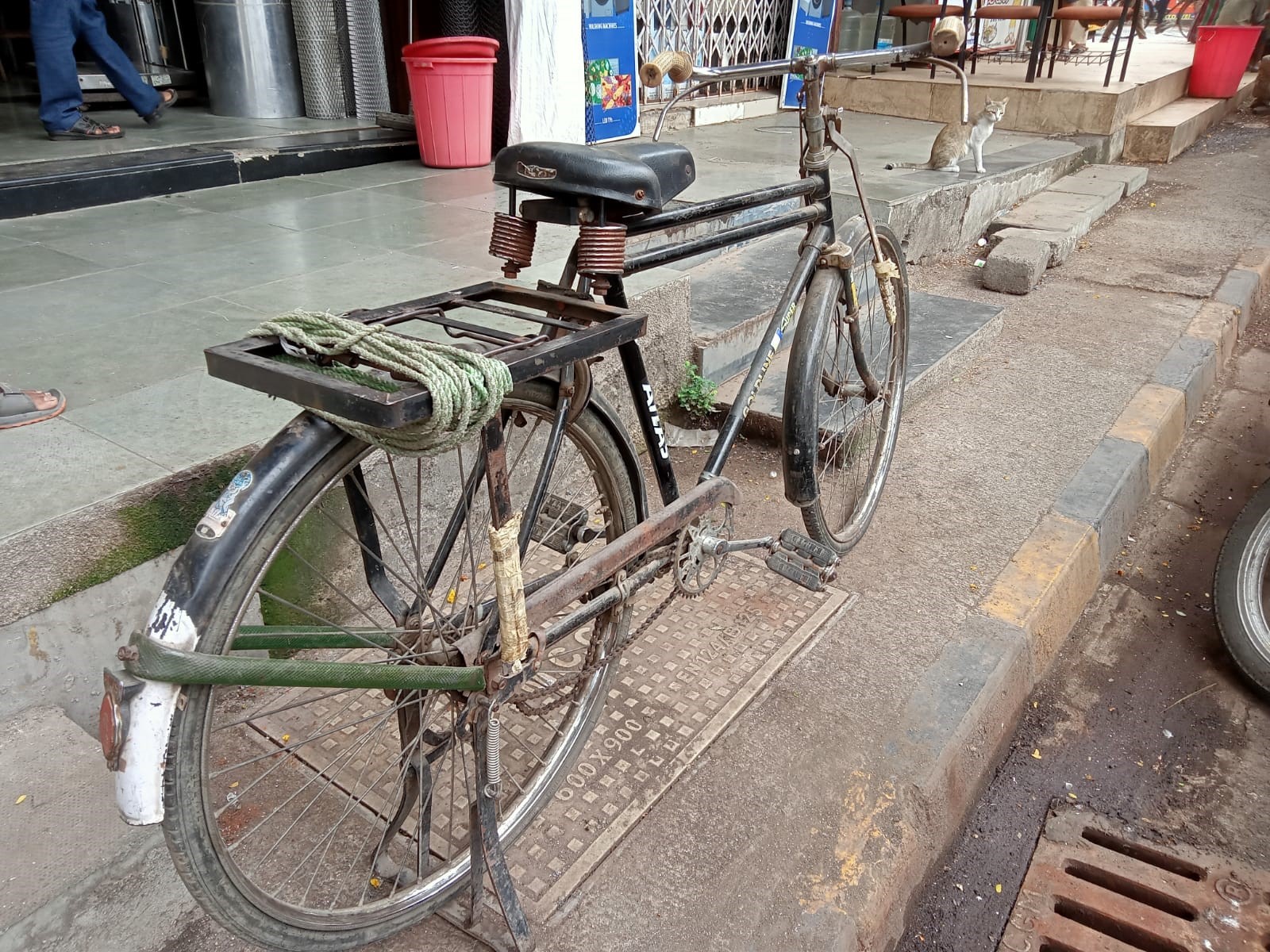 'Peti', a common feature on the cycle of the low-income group.
'Peti', a common feature on the cycle of the low-income group.
Ongoing programs with potential!
MMRDA’s existing ‘rent-a-bike’ program with Maha Mumbai Metro at Versova metro station and near Joggers Park, Andheri is effectively been used by delivery-driven cyclists. Upon interviewing them, it is understood that the program is popular and largely appreciated in local areas.
‘This is an excellent facility, I work with a food-delivery app and deliver food in the area using MYBYK. I take out the bicycle using the monthly subscription. During work hours, I use it to deliver food and during weekends and after work hours I use it for my personal commute. Then after a month I come back here and renew my subscription or submit the bicycle if I don’t plan on using it.', said a cyclist. Other interviews assent the same.
The program is flexible and works for the profile of the low-income cyclists and hence should be facilitated in other zones of Mumbai and especially in areas served and resided in by low-income cyclists. Some pointers to seamlessly expand the program are:
1. Integrate it with all the available public transportation in the city: The rent-a-bike program can be deployed at every metro station, bus depot, and railway station. It facilitates networked planning by connecting major and minor hubs serviced by the already existing public transportation network.
2. Strengthen the network: Another way is to start the ‘rent-a-bike’ program near housing societies, factories, large commercial zones, schools, and colleges. This would further strengthen the networking of the program and connect the low-income cyclists with the facility.
3. Safety of Bikers: Inclusion of safe dedicated bicycle tracks during the planning of roads and their widening.
4. Make it inclusive: Cater to areas of the low-income population.
5. E-bikes: The common suggestion by most of the low-income cyclists interviewed was a provision of e-bikes. When asked what could help them, a cyclist suggested, ‘I have seen battery plus manual gear cycle online, if the government can subside the purchase of the same, it would be hugely helpful, I don’t think the bike-sharing program is affordable to me, but the battery cycle will make the commute easier and I can still have the pride of owning a vehicle.'
He was referring to ‘e-bikes’ that are bicycles that have a battery-powered "assist" that can be activated by pedaling or, in some circumstances, a throttle. A small motor engages when you push the pedals on a pedal-assist e-bike, giving you a boost so you can speed up hills and cruise over tough terrain without added effort (Yeager, 2022).
Subsidization of the purchase of E-bikes or including them in ‘rent-a-bike’ program can encourage wider use of cycles. This article would like to extend the advocacy of e-bikes and suggest their implementation in the ‘rent-a-bike’ program. Some cyclists would also appreciate if the cost of e-bikes would be subsidized making it easier for them to buy and have the pride of owning a vehicle.
Mumbai is a bicycle capital!
Firoza Suresh, the founder of Smart Foundation Commute and bicycle mayor of Mumbai aims to make the city bicycle capital of India. Firoza works with the Mumbai Police, Brihan Mumbai Municipal Corporation, the Mumbai Metropolitan Region Development Authority, and the corporate community to advocate cycling. In 2019, she told the Deccan Herald, 'It is not only about creating awareness but working with authorities to ensure that we realise the dream of making Mumbai, the financial capital of the country to the bicycle capital.'
Mumbai has all the potential elements to be a bicycle capital. Low-income cyclists contribute to ridership. The density and road connectivity facilitate connection and the new bicycle programs have potential. Albeit there is no available data right now that assesses the sustainability impact of Mumbai’s low-income cyclists but they assuredly contribute highly to making the city’s commute sustainable. You can spot these cyclists at every nook, corner, and traffic signal of the city, carrying heavy delivery loads or their employment tools.
The requirement for the future is to ensure that the ecosystem of the low-income cyclists is nurtured, encouraged, and prospered by actively including them in the current and the future bicycle infrastructure planning of Mumbai and making the system easier and better for the low-income cyclist. The city will then truly foster a bicycle-friendly culture.
Note to readers:
This article is an excerpt of ongoing research at Alternate Angle Academy. We are gathering more information, data, and resources as we speak. The research will develop and modify according to new insights and development. If you would like to drop in suggestions and remarks please feel free to write to us at editor@woarchitect.com by adding the name of the article in the subject line. We would also like to thank all the cyclists who contributed to this article by giving us time from their busy workday!
About the Author:
Saba is an architect-planner from Mumbai City. Currently, she is making a documentary that explores the water crisis in rural areas of Maharashtra. As a passion project, she also has a podcast, created with a friend. Their podcast discusses urban planning issues that are neglected in mainstream academic spaces, titled "Lettus Talk". She also makes comics exhibiting her work on the social handle @saba_serkhel. To present her thinking efficiently, Saba explores avenues of expression through various mediums. To reach her, write to serkhels@gmail.com
References:
Adimulam, S. (2021). Mumbai: MMRDA to complete footpath and cycle track refurbishing work in BKC's G-block by March 2022 - here's all you need to know about the project. Free Press Journal. Retrieved June 6, 2022, from https://www.freepressjournal.in/mumbai/mumbai-mmrda-to-complete-footpath-and-cycle-track-refurbishing-work-in-bkcs-g-block-by-march-2022
Age., T. A. (2018, September 10). Mumbai second most populated city in World. The Asian Age. Retrieved June 6, 2022, from https://www.asianage.com/metros/mumbai/100918/mumbai-second-most-populated-city-in-world.html
Bose, M. (2019, June 1). The aim is to make Mumbai bicycle capital by 2030: SCF. Deccan Herald. Retrieved June 13, 2022, from https://www.deccanherald.com/national/west/the-aim-is-to-make-mumbai-bicycle-capital-by-2030-scf-737568.html
F. P. J. (2019). 'Maximum City' Mumbai second in the list of most densely populated cities in the world. Free Press Journal. Retrieved June 6, 2022, from https://www.freepressjournal.in/cmcm/maximum-city-mumbai-second-in-the-list-of-most-densely-populated-cities-in-the-world
Reporter, S. (2018, July 23). BMC set to start work on Phase II of Cycle Track. Return to frontpage. Retrieved June 6, 2022, from https://www.thehindu.com/news/cities/mumbai/bmc-set-to-start-work-on-phase-ii-of-cycle-track/article24498682.ece
Richa Pinto / TNN / Aug 14, 2018. (2018). Mumbai 1st among Mega Cities, does well on mixed land use, open spaces: Mumbai News - Times of India. The Times of India. Retrieved June 6, 2022, from https://timesofindia.indiatimes.com/city/mumbai/mumbai-1st-among-mega-cities-does-well-on-mixed-land-use-open-spaces/articleshow/65394080.cms
?Selene Yeager “The Fit Chick” Selene Yeager is a top-selling professional health and fitness writer who lives what she writes as a NASM certified personal trainer. (2022, May 10). No, e-bikes aren't here to rob us of our human-powered way of life. Bicycling. Retrieved June 6, 2022, from https://www.bicycling.com/skills-tips/a20044021/13-things-about-e-bikes/
